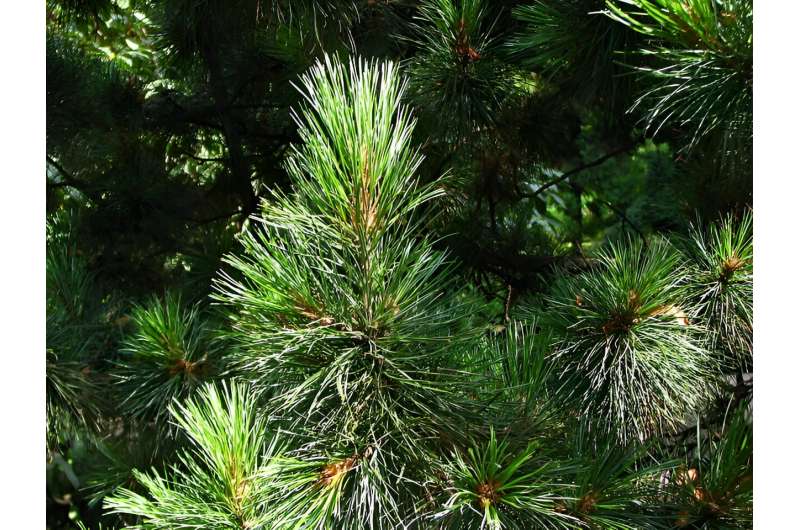This article has been reviewed according to Science X's editorial process and policies. Editors have highlighted the following attributes while ensuring the content's credibility:
fact-checked
trusted source
proofread
Study shows tree species have different strategies for coping with light conditions in forest understory

Scientists at the Institute of Applied Ecology of the Chinese Academy of Sciences have made a breakthrough in understanding why Korean pine trees are struggling to regenerate naturally in certain forests. These broad-leaf Korean pine forests are vital for capturing carbon dioxide from the atmosphere and maintaining healthy ecosystems in northeast China.
For decades, researchers have puzzled over why Korean pine seedlings often fail to thrive. While previous research has highlighted the importance of sunlight for these trees, the new study goes a step further by examining how different components of sunlight, such as specific colors of light and ultraviolet radiation, affect the growth of these trees.
The research team, led by Dr. Wang Qingwei, conducted experiments with seedlings of Korean pine (Pinus koraiensis) and Mongolian oak (Quercus mongolica), two common tree species in these forests. They exposed the seedlings to different light spectra and monitored their growth.
The study was published in Environmental and Experimental Botany.
The researchers found that blue light benefited both species, while ultraviolet B (UV-B) radiation had the opposite effect. It stunted the growth of Korean pine, but increased the height, leaf area, and overall biomass of Mongolian oak. This suggests that the two tree species have developed different strategies to cope with light conditions in the forest understory.
Mongolian oak, a broad-leaf deciduous tree, adjusts its morphological traits (e.g., total leaf area and aboveground biomass allocation) to capture more light. In contrast, Korean pine, a shade-tolerant evergreen conifer, relies on internal physiological and biochemical processes to make better use of available light.
These findings provide valuable insights for promoting natural regeneration of Korean pine forests and improving the health of these ecologically important forests.
More information: Jingran Ma et al, Contrasting light capture strategies between shade-tolerant and -intolerant tree seedlings responding to solar canopy spectral composition, Environmental and Experimental Botany (2024). DOI: 10.1016/j.envexpbot.2024.105857
Provided by Chinese Academy of Sciences





















